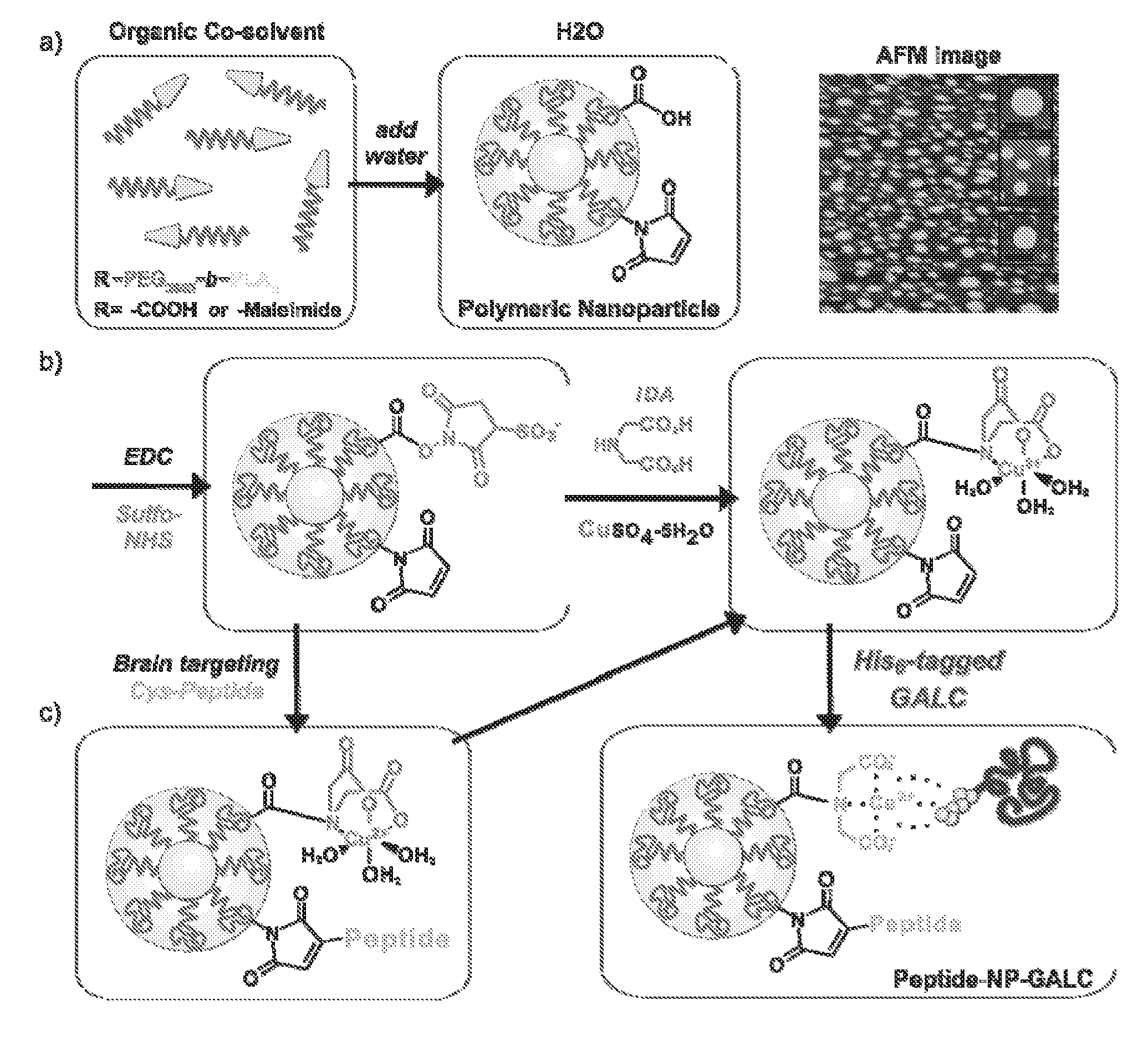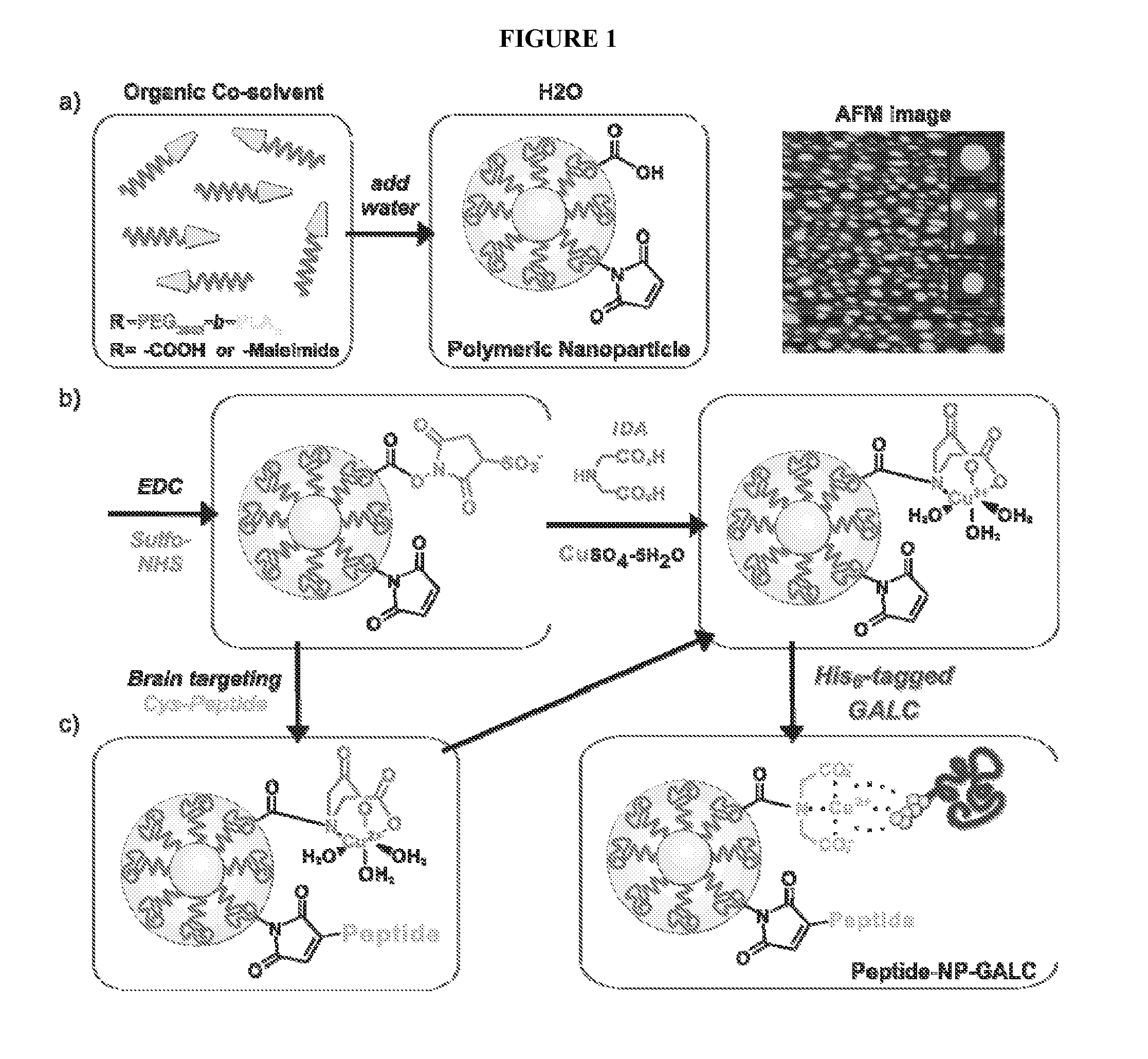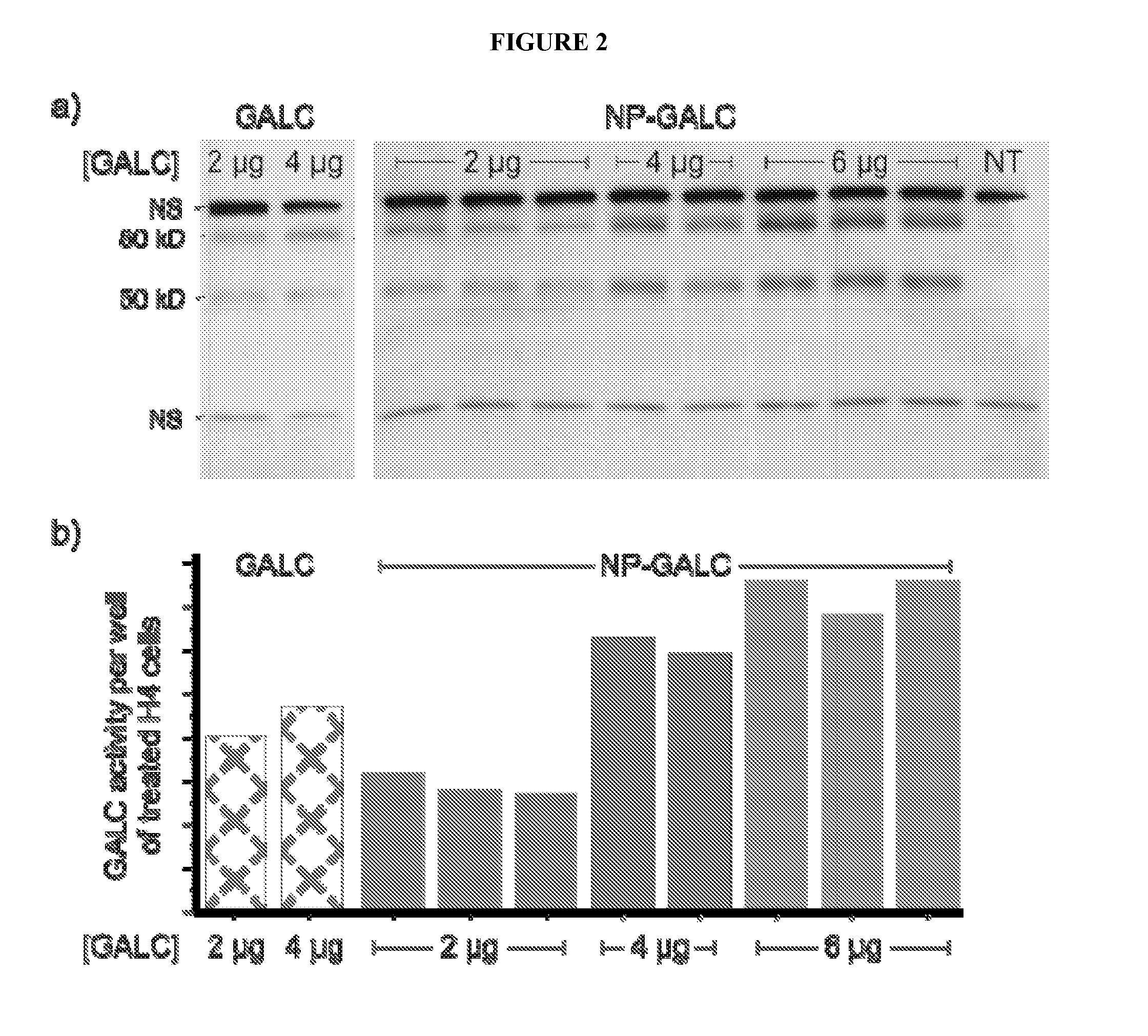Methods and materials for delivering molecules
- Summary
- Abstract
- Description
- Claims
- Application Information
AI Technical Summary
Benefits of technology
Problems solved by technology
Method used
Image
Examples
example 1
Peripheral Administration of GALC
[0041]Weekly intraperitoneal (i.p.) injections of recombinant murine GALC, harvested from GALC transfected HEK293 cells and purified by affinity chromatography, were performed on twitcher mice beginning at PND 10 or 20. These dosing regimens were selected to mimic both pre- and post-development of the twitcher neuropathology. The naturally occurring mouse model, twitcher, is enzymatically authentic to Krabbe disease. The twitcher mice phenotype derives from a single G>A mutation in the GALC gene, which produces an inactive form of GALC and causes demyelination in the CNS and peripheral nervous system by post-natal day (PND) 20. Twitcher mice typically succumb to their disease state around PND 40-42, after experiencing a failure to thrive, limb weakness and paralysis, and involuntary head twitching. Both enzyme replacement therapy (ERT) treatments equally increased the twitcher mouse life span from approximately 41 to 46 days, which is likely a clinic...
example 2
PEG-b-PLA Nanoparticle Synthesis
[0044]The small sizes of nanoparticles (2-100 nm) make them suitable for use in biological systems. The large surface-to-volume ratio is amenable to encapsulation or functionalization with similarly sized biomolecules, such that several copies of the same biomolecule can be loaded into single NP cores or conjugated to NP surfaces. Polymeric NPs self-assemble into core / shell structures from individual amphipathic polymers (containing both hydrophobic and hydrophilic portions); forming solid, colloidal, highly soluble NPs. In order to improve GALC biostability and bioavailability for the central nervous system, polymeric PEG-b-PLA NPs selectively conjugated to GALC were synthesized. The diblock copolymer, PEG-b-PLA was synthesized as previously described (Zhang et al., Colloid Polym. Sci. 282:1323-8 (2004); Dong and Feng, Biomaterials, 25(14):2843-9 (2004); Zhang et al., J. Drug Target 14(5):281-90 (2006)), with slight modification. Briefly, double-dist...
example 3
In Vitro and In Vivo Characterization of NP-GALC Conjugates
[0046]Preliminary experiments have led to the reproducible generation of NP-GALC conjugates, assembled from a mixture of COOH-PEG-PLA and methoxy-PEG-PLA polymers, such that approximately 50% of the NP surface should be covered with—COOH moieties and available for GALC conjugation. The morphology and size of the NP-GALC conjugates have been estimated by atomic force microscopy (AFM), and the activity of conjugated GALC verified. To better pinpoint the amount of GALC bound per NP, to more accurately calculate the specific activity of the preparations, and to determine general storage conditions that enable optimal stability, in vitro and in vivo characterization of NP-GALC conjugates was performed. AFM was used to calculate the number of NPs present per prepared suspension. Briefly, 10 μL of NP suspension at a wide range of dilutions (10-10,000-fold) were incubated on freshly prepared mica stubs that have been modified with 3...
PUM
| Property | Measurement | Unit |
|---|---|---|
| Fraction | aaaaa | aaaaa |
| Fraction | aaaaa | aaaaa |
| Stability | aaaaa | aaaaa |
Abstract
Description
Claims
Application Information
 Login to View More
Login to View More - R&D
- Intellectual Property
- Life Sciences
- Materials
- Tech Scout
- Unparalleled Data Quality
- Higher Quality Content
- 60% Fewer Hallucinations
Browse by: Latest US Patents, China's latest patents, Technical Efficacy Thesaurus, Application Domain, Technology Topic, Popular Technical Reports.
© 2025 PatSnap. All rights reserved.Legal|Privacy policy|Modern Slavery Act Transparency Statement|Sitemap|About US| Contact US: help@patsnap.com



